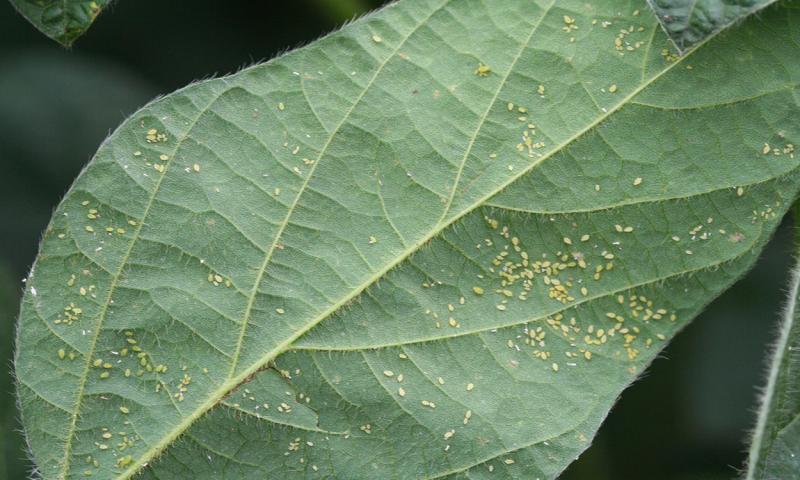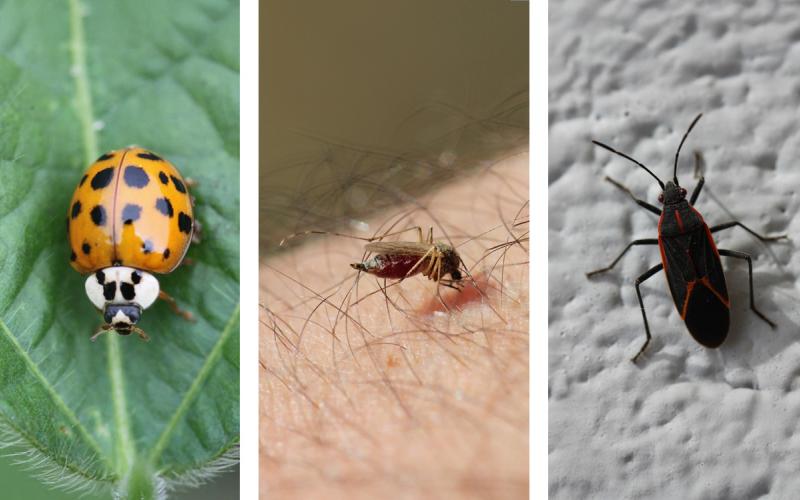
Written collaboratively by Adam Varenhorst, Amanda Bachmann, Philip Rozeboom, Patrick Wagner, and Brad McManus.
Originally Submitted: August 9, 2024
Recent Outbreaks
In many fields across eastern South Dakota, soybean aphid populations have reached or are close to reaching the 250 aphids per-plant economic threshold. Given the history of soybean aphid management, and the last few years with relatively no to limited soybean aphid pressure, there have been a lot of questions regarding the best approach to managing the 2024 outbreak.
In 2017 and 2018, populations of soybean aphids were tested in South Dakota and determined to be resistant to the pyrethroid class insecticide active ingredients lambda-cyhalothrin and bifenthrin at the highest labeled rates. Field failure reports that I have been receiving over the last week indicate that soybean aphids in South Dakota are still resistant to these two active ingredients, and possibly more of the pyrethroid active ingredients. As it has been discussed after the resistant populations were first discovered, we continue to recommend that lambda-cyhalothrin or bifenthrin and pre-mix products containing these active ingredients not be used in South Dakota for soybean aphid management. The bottom line is, there is a greater chance of these products failing, rather than succeeding, at reducing soybean aphid populations.
Insecticide Recommendations
Some recommendations that we have for 2024 soybean aphid management are to select an insecticide from the South Dakota Pest Management Guide: Soybean (pages 39 through 48) that contains an active ingredient or ingredients outside of the Mode of Action Group 3A (pyrethroid). Any insecticide that is being applied should be used at the highest labeled rate for the crop and pest. Reducing insecticide rates also reduces the percentage of the pest population that will be reduced by the insecticide application. This often results in the need for additional insecticide applications. If an additional insecticide application is needed, choose an insecticide that is not from the pyrethroid class and not from the same class of insecticides that were used for the first application. The same active ingredient or insecticide class should not be used more than once in a single season to manage soybean aphids.
There have also been quite a few questions regarding insecticide residuals for soybean aphid management. If aphids are not present in your field, do not apply insecticides. Although some insecticides can have a residual that extends beyond the application, the focus of these applications is to optimize coverage so that the insecticide products contact the aphids directly at the time of application. There are several environmental factors that can reduce residuals, and they are not as effective if an aphid population is rapidly growing.
It's also important to remember that pollinators do visit soybean fields while they are flowering. Applying insecticides later in the afternoon or early evening can reduce the impact that these broad-spectrum products have on native pollinators and honeybees. Please also remember to check the DriftWatch network and contact any beekeepers within the treatment area to ensure that any placed honeybee hives are not negatively affected by the insecticide application.
If you experience a pyrethroid failure, please contact Adam Varenhorst, Associate Professor & SDSU Extension Field Crop Entomologist.


